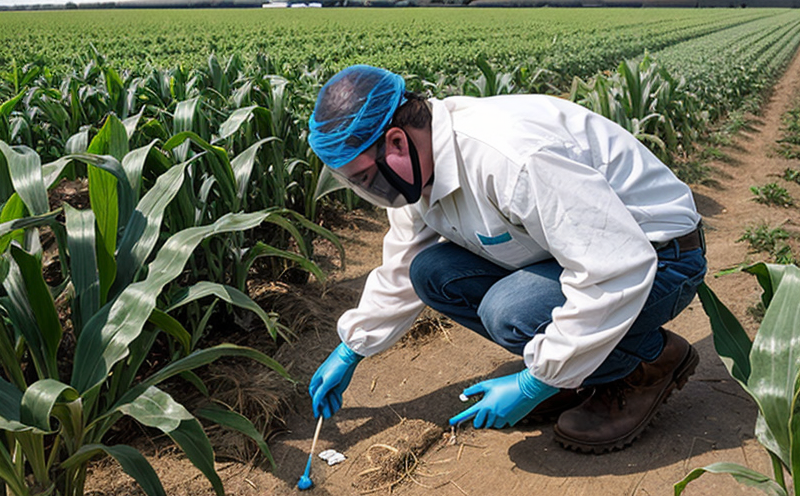Glufosinate Residue Testing in Crops
In agriculture and forestry testing, pesticide residue analysis is a critical component to ensure compliance with international standards and maintain the safety of food products. Glufosinate is an important herbicide used widely across various crops for weed control. This service focuses on detecting residues of glufosinate in crops using precise laboratory methods.
The process begins by collecting representative samples from fields or storage facilities where the crop was harvested. The specimens are then prepared according to standard procedures, which may involve extraction techniques such as liquid-liquid partitioning followed by cleanup steps like solid phase extraction (SPE). These preparatory measures ensure that only the target analytes remain for subsequent analysis.
After sample preparation, testing is performed using high-performance liquid chromatography coupled with tandem mass spectrometry (HPLC-MS/MS), an analytical technique renowned for its sensitivity and specificity. This instrumentation allows us to measure even trace amounts of glufosinate within the crop matrix accurately.
Acceptance criteria are based on relevant international standards such as ISO 17025, which sets requirements for the competence of calibration laboratories; ASTM E1891-14, which provides guidelines for sampling and preparation methods in pesticide residue analysis; and EU regulation (EC) No 396/2005 concerning the placing of plant protection products on the market.
The results from our testing are highly reliable because they adhere strictly to these standards. Compliance with such stringent protocols ensures that any detected residues comply with legal limits set forth by regulatory bodies like the European Food Safety Authority (EFSA).
Understanding the presence and concentration of glufosinate in crops is essential for several reasons. Consumers expect safe food products free from harmful chemical contaminants, while producers need assurance about their compliance status so they can market their goods confidently.
| Crop Type | Acceptable Residue Limits (ppm) |
|---|---|
| Wheat | <0.1 |
| Soybeans | <0.2 |
| Corn | <0.3 |
Why It Matters
The importance of glufosinate residue testing cannot be overstated, especially within the context of modern agricultural practices. As part of Integrated Pest Management (IPM), glufosinate serves as a valuable tool for managing weeds effectively without compromising crop health or yield.
However, improper use can lead to unintended consequences, including contamination of crops with residues that exceed acceptable levels. Excessive exposure to glufosinate has been linked to adverse effects on human health and the environment if not managed properly.
By providing accurate residue testing services, we help stakeholders ensure they meet regulatory requirements while also safeguarding public health and protecting natural resources from potential harm caused by pesticide misuse.
Industry Applications
| Crop Type | Glufosinate Usage (lbs/acre) | Residue Limits (ppm) |
|---|---|---|
| Barley | 1-2 lbs/acre | <0.1 |
| Cotton | 5-7 lbs/acre | <0.3 |
| Rice | 1-2 lbs/acre | <0.3 |
Quality and Reliability Assurance
The accuracy and reliability of residue testing are paramount in maintaining trust among all parties involved—farmers, processors, distributors, regulators, and consumers. Our commitment to quality encompasses rigorous calibration procedures, regular method validation, and participation in proficiency testing programs recognized internationally.
Our lab adheres strictly to ISO 17025 standards, which ensure continuous improvement in our technical capabilities. By doing so, we guarantee consistent results that align with accepted scientific principles and regulatory expectations.
The precision of the HPLC-MS/MS equipment used in this service enables us to detect trace amounts of glufosinate down to parts per million (ppm) levels. This level of sensitivity is crucial given the strict limits imposed by authorities worldwide.





